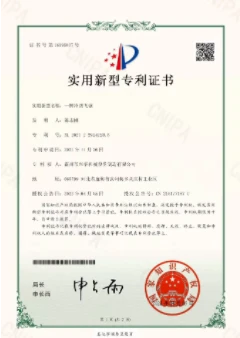Affordable Prices for Decoiler Machines in Today's Market
Understanding Decoiler Machine Prices A Comprehensive Overview
In the manufacturing and metalworking industries, the decoiler machine serves a crucial function. It unwinds coils of metal or other materials to prepare them for further processing. Given the importance of this machinery in production lines, businesses often seek to understand the various factors influencing the price of decoiler machines.
What is a Decoiler Machine?
A decoiler machine, often referred to as a coil unwinder, is designed to handle coils of material—such as steel, aluminum, or plastics—and feed them into machines for further processing. This equipment is essential for operations like stamping, cutting, and forming, ensuring that raw materials are efficiently processed with minimal waste.
Price Range of Decoiler Machines
The price of decoiler machines can vary significantly based on several factors, including the machine's specifications, capacity, brand, and additional features. Generally, the price range for decoiler machines can be anywhere from $3,000 to over $50,000. Basic models that handle lighter materials might be priced lower, while heavy-duty machines designed for larger coils or more sophisticated applications can command higher prices.
Key Factors Affecting Decoiler Machine Prices
1. Machine Specifications The specifications of a decoiler machine play a pivotal role in its cost. Machines that can handle larger coil weights or widths typically come at a premium. Additionally, the speed at which the machine can unwind the coils will impact the price; higher speeds usually mean a higher cost due to the need for more robust components and technology.
2. Type of Decoiler There are various types of decoiler machines available, including manual, semi-automatic, and fully automatic models. Manual decoilers are less expensive but require more labor and are slower, while fully automatic machines offer high efficiency and can be integrated into automated production lines, leading to higher prices.
decoiler machine price

3. Brand Reputation The brand of the decoiler machine can also influence its price. Established manufacturers with a strong reputation for quality and reliability often charge more for their products. However, investing in a reputable brand can save money in the long run due to lower maintenance costs and greater durability.
4. Additional Features Advanced features, such as electronic controls, safety mechanisms, and integration capabilities with other machinery, can significantly raise the price of a decoiler machine. Customers should evaluate the necessity of these features based on their specific production needs.
5. Market Demand and Location The economic climate and regional demand for decoiler machines can also affect prices. For instance, in areas with high industrial activity, prices may be higher due to increased demand. Conversely, in regions with less industrial focus, prices may be lower as suppliers compete for business.
Budgeting for a Decoiler Machine
When budgeting for a decoiler machine, businesses should consider the total cost of ownership, which includes not only the purchase price but also installation, maintenance, and the potential need for operator training. It's also important to conduct a thorough comparison of different models and suppliers to find the best value for money.
In addition to the initial investment, businesses should factor in the potential return on investment (ROI). A high-quality decoiler machine can lead to increased efficiency, reduced waste, and improved product quality, all of which can significantly enhance profitability over time.
Conclusion
In conclusion, understanding decoiler machine prices involves examining multiple factors, including specifications, type, brand, and additional features. While the upfront cost might be a significant consideration, businesses should also focus on the machine's long-term benefits and efficiencies. By making informed decisions, companies can invest in the right decoiler machine that meets their production demands while ensuring cost-effectiveness and reliability in their operations. As the manufacturing landscape continues to evolve, investing in quality equipment will remain a priority for businesses looking to enhance their competitive edge.
-
High Frequency Straight Seam Welded Pipe Production Line-BzZhou Xinghua Machinery Equipment Manufacturing Co., LTD.|Precision Welding, High EfficiencyNewsJul.30,2025
-
High Frequency Straight Seam Welded Pipe Production Line|BzZhou Xinghua|Precision Welding&EfficiencyNewsJul.30,2025
-
High Frequency Straight Seam Welded Pipe Production Line - BzZhou Xinghua|Precision Engineering&EfficiencyNewsJul.30,2025
-
High-Frequency Straight Seam Welded Pipe Production Line-BzZhou Xinghua Machinery Equipment Manufacturing Co., LTD.NewsJul.30,2025
-
High-Frequency Straight Seam Welded Pipe Production Line-BzZhou Xinghua Machinery Equipment Manufacturing Co., LTD.|Precision Manufacturing, High EfficiencyNewsJul.30,2025
-
High Frequency Straight Seam Welded Pipe Production Line-BzZhou Xinghua Machinery Equipment Manufacturing Co., LTD.|Precision Steel Pipe Manufacturing&Industrial EfficiencyNewsJul.29,2025


